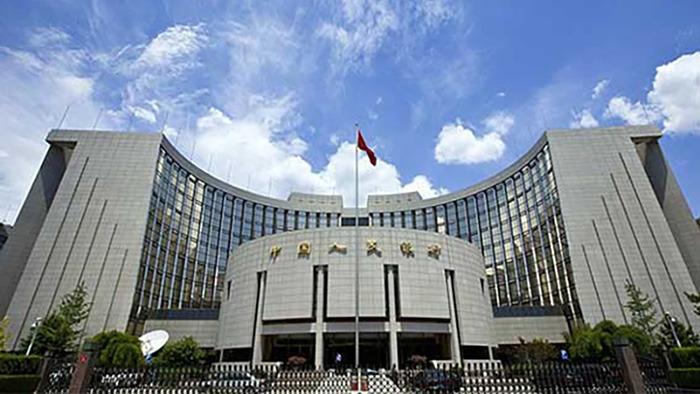 This undated file photo shows the headquarters of the People's Bank of China (PBOC), China's central bank, in Beijing, China. (PHOTO / XINHUA)
This undated file photo shows the headquarters of the People's Bank of China (PBOC), China's central bank, in Beijing, China. (PHOTO / XINHUA)
Despite the expected looming interest rate hikes by the United States Federal Reserve, China is likely to ease monetary policy in the coming months after keeping benchmark lending rates steady in February, experts said on Monday.
They made the comments as China's one-year loan prime rate, or LPR-the benchmark lending rate mainly for short-term loans to companies-came in at 3.7 percent on Monday, unchanged from January, the National Interbank Funding Center said.
The over-five-year LPR, on which many lenders base their mortgage rates, also remained unchanged from the previous reading of 4.6 percent, according to the center.
Experts said the pause will likely end soon with more easing measures, despite the fact that the US Fed is expected to raise interest rates as early as March, which is typically deemed an impediment for other central banks to launch monetary easing
The stable rates mark a pause by the People's Bank of China, the country's central bank, in reducing interest rates to stabilize the economy, as the one-year LPR has dropped by two consecutive months in December and January by 0.15 percentage point in total.
READ MORE: China able to act on economy, say officials and experts
Experts said the pause will likely end soon with more easing measures, despite the fact that the US Fed is expected to raise interest rates as early as March, which is typically deemed an impediment for other central banks to launch monetary easing.
"There is still ample policy space for the PBOC to ease policy to help stabilize China's economy despite the expected Fed rate hikes," said Wang Tao, head of Asia economics and chief China economist at UBS Investment Bank.
Though Wang expects the Fed to raise interest rates six times this year, she said the rate hikes may lead to no major appreciation of the greenback and therefore limited pressure on China when it comes to a decline in capital inflows and a weakening of the renminbi.
As a result, there will remain space for the PBOC to conduct easing measures, Wang said, with March or April likely to see another cut in the reserve requirement ratio or RRR while the LPR may further decrease slightly this year.
In a bid to free up more funds for the real economy, the PBOC implemented a 0.5-percentage-point cut in the RRR in December, or the proportion of money that lenders must hold as reserves. This was followed by a reduction in the interest rate of medium-term lending facility, a key policy rate, in January.
The National Development and Reform Commission has pledged more monetary support in a notice published on Friday that called for reducing the LPR and promoting further drops in real lending rates on top of the significant decrease achieved previously.
ALSO READ: Experts: Increased monetary easing likely
By contrast, the minutes of the January Federal Open Market Committee meeting showed that the Fed is ready to move against hot inflation. Experts expect the Fed to raise interest rates from March, though it remains uncertain whether the first hike will be an increase of 0.25 or 0.5 percentage point.
"I don't think the PBOC is taking the Fed's pace of tightening as a decisive factor in monetary policy formulation," said Kang Yong, chief economist at KPMG China. "China and the US are in different cycles of economic recovery and face totally different inflation situations."
More easing measures are necessary in China as soon as possible to bolster market confidence in economic prospects, said Kang, who forecasts that the LPR may decrease by 0.1 percentage point in March while another RRR cut may take place in March or April.
The difference in consumer inflation readings between the US and China rose to a record high of 6.6 percentage points in January, Kang said, indicating that China has the conditions to dictate its monetary policy based on domestic economic conditions instead of any Fed moves.


